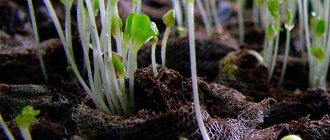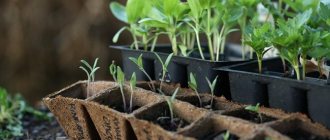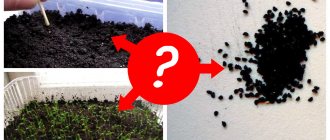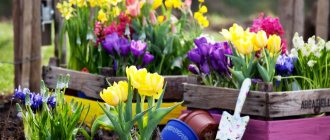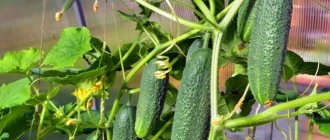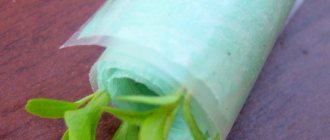Author: Elena N. https://floristics.info/ru/index.php?option=com_contact&view=contact&id=19 Category: Garden plants Published: March 28, 2016Last edits: November 03, 2020
- Watering
In April, in areas with a warm climate, it is already possible to sow annual flowers in open ground, but where spring is late and summer is short and cool, it is better to use the seedling method of growing flowers. There are no strict timing for sowing seeds of one type or another, because the duration of the growing season of a crop depends on many conditions: the climate of the area, weather, quality of seeds and soil. Based on this, you yourself will have to decide when exactly to sow flower seeds for seedlings and at what time to then plant the seedlings in the ground, but there is a certain list of plants that are most often sown for seedlings in April.
How to Plant Flower Seeds: Planting Seeds for Healthy Growth and Bloom
When you learn how to sow flower seeds, you will have a wide selection of flowers that are not available for purchase in the form of bulbs or seedlings.
On the other hand, planting flower seeds is somewhat more difficult than planting and replanting ready-made plants and requires more diligence at the beginning. And this will bring you a huge opportunity to choose flowers for your garden, but also significant savings on the family budget. This page will help you understand the intricacies of growing flowers from seeds and can ensure that your flower seeds will germinate, bloom and continue to produce lush, beautiful flowers...
- When to Plant Flower Seeds
- Instructions for planting flowers in open ground
- Instructions for planting flowers in closed ground (also used when planting herbs, vegetable seeds) What should the pot or container be like?
Picking
Seedlings are picked 2-4 weeks later, after the second true leaf has developed. It is done as follows:
- Take a seedling with your left hand, and a picking peg with your right;
- The plant is lowered into a hole made with a peg, down to the cotyledons. When picking, the roots of the plant should not bend to the sides or upwards;
- Using a picking peg, press the soil tightly against the roots so that there are no voids left.
After picking, shoots should be protected from drafts and direct sunlight.
Important: When diving, the seedlings are stronger, with a well-developed root system, and the plants flower much earlier. As a rule, picking is resorted to in cases where high-quality, valuable material is used.
When planning to plant seeds and then pick seedlings, the gardener must take into account that the use of this technique requires additional area of closed ground.
If plants are grown without picking, then it is important for the grower not to be late in thinning out the seedlings. In the phase of 2-3 leaves, the weakest plants are removed. The distance between the remaining plants should be at least 1-2 centimeters. After thinning, plants need watering.
When to Plant Flower Seeds
The timing of indoor planting is really important... until you understand this: seedlings can only be planted outdoors when they are strong enough and have an established root system. You should also take into account the climate: you cannot plant flowers in open ground while there is a possibility of frost.
Perennial bulbs have some special planting requirements. See our how, where and when to plant flower bulbs page (coming soon) for more information.
Sowing flower seeds in open ground is a completely different matter, and the timing of planting depends on whether your flower is an annual or perennial plant
- Perennial flowers
- annual flowers
Perennial Flowers: When to Plant Perennial Flower Seeds in Open Ground
Perennial flowers should be planted from seed in one of two periods: early spring or late fall. Planting in early spring will ensure that your plants' roots have enough time to grow big and strong and have the strength to survive the winter.
But will planting in late fall be detrimental to my plants before they have a chance to grow? Covering the seeds provides the necessary protection for the plants, and the seeds will remain dormant until spring awakening.
Planting in late fall serves another purpose: many perennial grass seeds need a moist, cool period to germinate (a process called "Lamination"). Performing spring sowing for perennial plants with such a vegetative cycle will require more active participation on your part.
Despite the fact that learning how to plant flower seeds in the spring is much more difficult than it might seem at first glance. You need to prepare and be patient. You need to first mix your seeds with vermiculite and evenly wet the mixture until it has the moisture content of a wrung out sponge. Place the mixture in a tightly sealed container or other airtight container and refrigerate for 2 ½ to 3 months. Obviously, spring sowing is not a spontaneous event and is based on the planned planting date.
Decorative sunflowers - flowers without seedlings, plus each seed - a flower bed
I really liked the low-growing specimens: one bush - a whole flowerbed.
Sunflower Bear
In our climate, I sowed on May 15, at the same time I sow beans, corn, and beets. Sunflowers bloomed in July and bloomed until the cold weather. I also liked the tall decorative ones. I bought red ones for this season.
Annuals: When to Plant Annual Flower Seeds in Open Ground
Annual flowers have another very important indicator, such as their tolerance to cold...
- Frost-resistant flowers can be planted as soon as the soil is thawed enough to be dug in and the soil temperature does not drop below -4°C.
- Medium-hardy flower seeds can be planted no earlier than the ground has warmed up enough; they can withstand light frost and will most likely be fine.
- Heat-loving plants should not be planted until the danger of frost has completely passed. Any temperature below 4 C will result in plant death.
See our Flower Planting Guide for a breakdown of each flower's hardiness level.
If you want to have your warm- and medium-hardy annual flowers in the garden as early as possible, then you need to sow them indoors (discussed further at the bottom of the page) and transplant them into the garden when the air temperature is more favorable.
If you want to learn how to plant flower seeds (annual or perennial) outdoors, check out our next section...
Timing for sowing annuals for seedlings
When choosing plants to decorate the area, first of all you need to familiarize yourself with the characteristics, growing conditions, and flowering times. If you focus only on appearance, you can purchase plants for which the climate, soil, and conditions are not suitable.
Among the annual flowers, there are unpretentious ones that are resistant to low temperatures and weather disturbances, and they are easier to sow immediately in place, without bothering with growing seedlings. Agrostema, amaranth, marigolds, cornflower, gaillardia, godetia, sweet peas, delphinium, cosmos, toadflax, poppy, matthiola, marigold, etc. are suitable for sowing in a flowerbed. The plantings must be covered with film.
Planting: How to Plant Flower Seeds in Open Ground
Preparatory work
Before you learn how to plant flower seeds, there is some preliminary work that needs to be done to get your garden and flower beds in order. See our Starting a Garden and How to Grow Flowers pages. From them you can learn all about creating the garden space where it needs to be to produce healthy, quality flowers.
Also be sure to give your plants enough room to grow. Pay attention to their height and width (see the Flowers section for this information). This will allow you to organize the space in the garden accordingly.
And finally, match your space with the lighting requirements of each flower. Most flowers need sun (at least 6 hours a day) or partial shade.
Assuming the space is ready, consider these steps to learn how to properly plant flower seeds (annual or perennial)...
- Plant at the appropriate time based on each flower's requirements: Perennial flower seeds are easier to sow in the fall for the reasons described above. If you want to plant them in the spring, you will need to first mix your seeds with vermiculite and evenly moisten the mixture until it is like a wrung out sponge. Place the mixture in a tightly sealed container and refrigerate for 2 ½ to 3 months. Do this ahead of time so the seeds should be ready when your planned planting date arrives.
- There are two things to consider when planting annual flower seeds: Crop rotation: Never plant the same type of flower in the same location every year. Ideally, wait at least three years before planting the same annual in the same location. (See CROP ROTATION for more on the importance of crop rotation).
- Frost resistance of plants: As described above, check the frost resistance level of each flower before planting to ensure timely planting in the ground.
See our How to Grow Flowers page for information on how to care for your flowers after you've thinned them out.
What flower beds to make from annual plants
It is very convenient to plant flowers in flowerpots or containers - they can be placed along paths, by a pool or pond, on a balcony or threshold. In this case, changing the flower arrangement is very easy - you don’t need to dig it up and replant it, but simply move it from place to place. Flowers growing this way require less attention and are easier to care for than those growing in the garden. Petunia, fuchsia, viola, lobelia, nasturtium - beautiful cascades are made from these flowers, using several flower pots along with floor flowerpots, it looks very decorative. They decorate balconies and windows.
Creative owners plant flowers not only in special flowerpots, but also use broken dishes, old shoes (the viola looks touching), bedside tables, even cars. You can put a pot somewhere, and simply fill some container with soil and plant annual flowers. Such unusual flower beds look very decorative; they can be moved from place to place, decorating it situationally. You can’t plant a shady corner of the garden with flowers (although there are shade-tolerant, even shade-loving ones), but you can simply bring in these modular flower beds for a few hours. This option is good for landscaping a balcony. For modular flower beds decorating balconies, verandas, and thresholds, different varieties of petunias and violas are perfect.
Designers use the word “edge” to describe a motley border, which most often has a regular geometric shape. They can be one-sided (in the background of the diagram there are tall plants, and closer to the viewer they are reduced to low-growing violas), double-sided (tall plants are planted in the center, and medium-sized ones on both sides, followed by low-growing ones). Round ridges are created according to the same principle. Calendula, which blooms until frost, is often used.
Mixborders are by far the most popular type of flower garden. It consists of different types of plants that bloom at different times, thereby creating the effect of continuous flowering. White, yellow, red, orange, blue, purple flowers can grow side by side and replace each other over time. It is very important to select plants not only according to flowering time and care, but also according to color and size combinations. Very often they use yellow or orange calendula, double asters, viola, matiola - they like to decorate balconies and dachas.
Color spots are created from annuals of the same color.
A group of yellow calendulas or yellow marigolds in the middle of a green lawn looks very decorative. Bright salvias or zinnias are often planted this way. Shade-tolerant violas can hide in the shade of the garden in a small spot in the middle of the grass. A single plant is called a tapeworm; it always becomes the center of the composition. Such plantings are created against the backdrop of a lawn or low-growing ground cover plants. Castor beans and datura look very decorative. In contact with
Landing Indoors
How to Plant Flower Seeds: Getting Started
When starting flowers from seeds in containers, use a new organic mixture every year. Because the nutrients in the old soil were depleted last year.
This is exactly how you need to sow flower seeds for year-round cultivation...
- Select containerbased on where you want your plants to end up:
- If you plan to move them into the garden , the easiest option is to use peat pots or organic soil cubes. Peat pots allow you to replant the flower along with the container into your garden, it is easy for you and the seedlings.
Peat Pots
They are completely biodegradable and actually improve the surrounding soil once the seedlings are planted. Organic cubes are made from organic material and allow the plant to take root faster. They are also completely biodegradable and can be transferred directly into the soil when transplanted.
- If you plan to keep your flowers indoors and grow them in pots , you have several options. You can start with peat pots (one plant per peat pot) and transplant them into a larger pot or container later (make sure the pot has good drainage), or you can simply sow them into a large pot or container.
(How to Grow Plants Indoors from Seeds / Planting Instructions Below)
What should the pot or container be like...
1.If you decide to use a container to sow your seeds or transplant your seedlings, here are a few features to keep in mind...
- Material : plastic, clay, wood or stone (your personal choice)
- Size : Must be appropriate for the task at hand. Determine the size of the future grown plant before choosing a pot.
- Drainage : Your plants will die without proper drainage. At a minimum, there should be several holes in the bottom.
- Humidification Features : Saucers placed under the pot with holes in the bottom and self-watering pots serve to water your plants from below. This is much better than watering them by hand, since the plants themselves determine when they need water and how much they need.
- Fill your chosen container with the soil mixture that you have previously dampened (should feel like a wrung out sponge), leaving approximately 6.4mm to 2.5cm of space between the top of the mixture and the top of the container (depending on the size of the container, for peat soils). pots, leave about 6.4 mm.
- Lightly compact the soil , but do not overdo it. Remember the soil must be moisture- and breathable.
- Create shallow furrows or holes in your soil (for exact depths, follow the flower recommendations in our flower planting guide or the instructions on your seed packet).
- Drop flower seeds into holes or furrows . Do your best to spread the seeds evenly, but don't worry if it doesn't turn out perfectly. You can always thin out the plants later if they start to sprout too close together.
- Cover the seeds based on their individual planting needs . Some require a light layer of soil
while others (such as most very small seeds) do not need to be covered at all. - Create a fine mist over your seeds. Using a sprayer
- Cover the container with glass or clear plastic
- Place the container where it receives indirect sunlight and a temperature of around 21 C.
- Once the seeds have germinated (sprouted), remove the plastic bag or glass and move the plant to an area where there is direct sunlight and control the temperature it should be in the range (15.5 to 24 C) - check out our Flower Planting Guide for reference with the temperature requirements of specific plants, if any. Germination can occur very quickly, so watch the seedlings closely.
- Your seedlings or seedlings should be well watered, but know when to stop . As a general rule, let the soil mixture dry out slightly between waterings. It’s even better if the place for seedlings is equipped with a humidifier.
- If your flowers will end up (or remain) in a pot or container...
- Transplant your seedlings into individual pots after they have grown their first set of true leaves, using potting mix instead of garden soil to ensure the seedlings receive the nutrients they desperately need during this stage. As you pull out each plant, there is a chance that several seedlings will be linked together. Separate them and transplant each seedling separately - one at a time into a peat pot or 5 cm from each other into a larger container. To properly transplant each seedling into its new location, use your finger to press down on the soil and make a hole deep enough to allow the seedling to grow at the same soil level as before.
- Gently wet the soil around each seedling.
- Harden off your flowers (to get them used to the harsher conditions of their new environment) before leaving them outside permanently or planting them in pots outdoors Day 1 - Leave them outside for 4 hours in sun that suits recommendations for each plant (direct sunlight, partial shade, full shade)
- Day 2 - Leave them outside for 6 hours
- Day 3 - Leave them outside for 8 hours
- Day 4 - Transplanting into a garden or flower bed.
Balsam
Balsam is “Vanka wet”. You can buy ready-made seedlings in the store or grow them yourself. This is an annual plant; you don’t have to dig it out of the ground in the fall, allowing the seeds to ripen. They will fall into the ground around the bush; do not dig up the ground under the bush in autumn and spring. Cover the flower with earth for the winter, and in the spring the seeds will sprout and again delight you with their beauty. Now there are many double forms of balsam, they are easily rooted by cuttings, it is better to plant them in the ground where there is no direct sunlight. Loves water and does not tolerate a lack of it in the soil and air. Loves rainy and cloudy weather.
How to Plant Flower Seeds: Where to Buy Seeds
Now that you know when and how to grow indoor and outdoor plants from seeds, it's time to collect some seeds. To choose the flowers you'd like to grow, check out our Flower Planting Guide.
When growing flowers from seeds, bulbs, cuttings or transplants, always purchase your planting material from a safe place to ensure the following:
- Do you know what kind of flower or plant you planted?
- Flowers or seeds come from a healthy source (i.e. they are properly matured)
There are several places to buy your seeds both online and offline...
- Your neighbors. Are you impressed by your neighbor's flower garden? Ask them where they get their seeds or seedlings. They may even give you free flowers the next time they divide their perennials.
- Local nurseries or garden centers
- Seed catalogs (offline and online).
Verbena
Verbena is a low-growing annual, very beautiful, blooms all summer until late autumn. Sowing seeds at home in early March. Flowering from July to October. The soils are fertile and loose. For better tillering, you need to pinch the crown. To prolong flowering, you need to constantly pick off wilted flowers. In dry weather, be sure to water.
Annual flowers have been delighting us with their riot of colors for a long time. Having selected the necessary flowers, you can admire this beauty all season long. Do you want a beautiful and original flower garden? Then click here!
melikedacha.ru
Autumn sowing
Early flowering.
Summer plants sown in the ground on the eve of winter bloom next year a week earlier than when grown as seedlings.
What annuals can be sown in the fall:
alyssum, summer aster, cornflower, viscaria, Ajax delphinium, goldenflower, iberis, coreopsis, kochia, cosmos, poppies, gillyflower, calendula, tobacco, summer chrysanthemum, eschscholzia.
Soil preparation.
The beds for sowing are prepared in September, then, with the onset of frost, seeds are sown in pre-made grooves. They are covered with a mixture of soil and sand or peat on top. It is important that the ridges are covered with snow in winter.
Weeding and thinning.
The first thinning and weeding is carried out in the spring, after the appearance of one or two leaves. During subsequent thinning, the gaps necessary for their normal development are left between plants.
- 1 of 1
On the picture:
Iberis grown from seeds by sowing in the ground in the fall.
Calendula is already beautiful, but the new varieties are simply amazing
Very luxurious varieties have now been developed: double, two-colored, cut on tall stems with baskets up to 10 cm in diameter.
Calendula Dragon
I bought varieties:
- Golden Prince - the bud looks like a zinnia;
- Sunset - terry with a pink tint;
- Kabluna Gold - cutting, anemone-like;
- Neon - very similar to helichrysum, but the basket is larger - 6-8 cm.
You can sow either before winter or in early spring. calendula is not afraid of frost. It reproduces well by self-sowing, but in the second year it will not be as beautiful as the first. Excess self-seeding is easily pulled out, the tops are juicy, soft, and pleasant to the hands.
Spring sowing
As soon as the weather permits.
In spring, growing annuals by sowing in open ground begins in late April–early May.
Which annuals can be sown in spring:
calendula, asters, nasturtium, eschscholzia, clarkia, cornflower, gypsophila, cosmos, lavatera, godetia, nigella, ornamental grasses and other species.
Soil preparation.
A place for them is prepared in the fall or in April. Humus, compost and complex mineral fertilizers (20-30 g/m2) are scattered over the surface of the site; the soil is carefully dug up, choosing weeds. The surface is leveled with a rake and furrows are made.
Sowing and care.
Sow thickly; in the phase of appearance of one or two true leaves, excess seedlings are removed or planted.
- 1 of 1
On the picture:
Paniculata amaranth is not difficult to grow by direct sowing the seeds into the ground in early June, when the threat of frost has passed.
Agrostemma - cutie for flower meadows
It seemed to me a good match for Heavenly linen: pink and blue.
Agrostemma
I have the Milas variety, for some reason in Google images it is not pink, like on the package, but lilac. Also good.
The seeds are round, not small, sown in May or before winter. The bushes branch strongly (height 50 cm), bloom profusely, but they need sunny clearings. This is the perfect flower to create your own meadow. Not everyone likes mowed lawns.
I plan to scatter agrostemma and flax over my lawn (I won’t cut it). I think it will be bright and natural at the same time.
